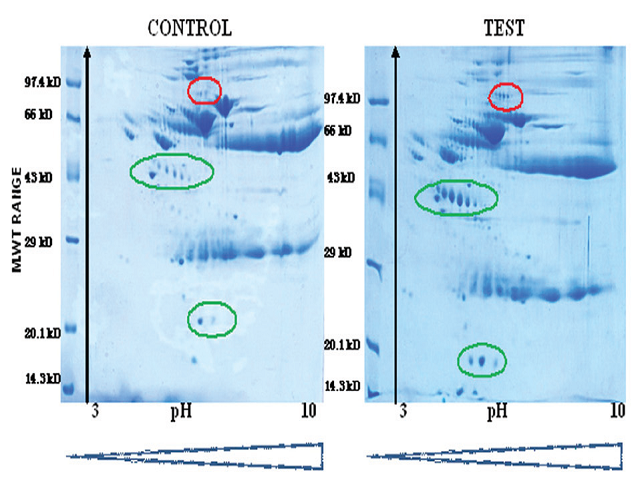Haptoglobin, an acute phase reactant as marker for chronic pancreatitis – evidence from serum proteome analysis
DOI:
https://doi.org/10.5530/ax.2012.4.3Keywords:
Chronic pancreatitis, Haptoglobin-2 (Hp-2), Acute phase reactant, Antioxidant, Serum proteomeAbstract
Background and Aim: Serum proteome analysis is a novel tool to detect the protein markers for any pathological disease. Diagnosis of chronic pancreatitis is mainly based on the level of serum marker enzymes amylase and lipase. The aim of the present study is to evaluate other new serum protein markers for chronic pancreatitis in human subjects by proteome analysis. Subjects and Methods: Serum proteome analysis was carried out in groups of pooled serum samples from chronic pancreatitis patients (n-25) registered in the Department of Surgical Gastroenterology and Proctology, Stanley Medical College and Hospital in the age group of 30 – 50. Normal serum samples (n-20) were pooled in groups from age and sex matched normal healthy volunteers. Serum proteome analysis was carried out by conducting 2D-electrophoresis, identifying differentially expressed proteins, isolating and excising the bands of interest, digesting the proteins by trypsin, separating of digested peptides by 2D Liquid Chromatography Mass spectroscopy (2D LC-MS) and identifying peptides by Mass Finger Printing Technique. The proteins were then confirmed by protein search engine programme MASCOT. Quantitative analysis of such protein(s) was carried out individually in all the samples for confirmation. Results: Among the 45 differentially expressed proteins, we have considered Haptoglobin-2 (Hp-2) as one of the marker, since Hp was quantitatively elevated significantly in all the samples considered for the study. Hp-2 isoform was also confirmed by native PAGE by using specific Benzidine-H2O2 stain. Being a natural acute phase reactant, Hp-2 level might have been elevated as a compensatory mechanism to counteract the tissue damage and to overcome the oxidative stress as an antioxidant because pancreatic tissue damage and inflammation is associated with the harmful effects of free radicals. Conclusion: Hp-2 isoform, a positive acute phase reactant with antioxidant property is identified as a marker for chronic pancreatitis by serum proteome analysis.
Downloads
Metrics





